In the first three articles in this series, I walked you through how to use the API using GraphiQL, a web based tool included in Sonar. Now let’s build a very simple application so we can consume the API externally.
Using the Sonar GraphQL API in an external application is pretty simple. It’s served over HTTPS, and the only HTTP verb you need to use is POST. GraphQL is a different paradigm to something like REST, where the HTTP verb dictates the behavior. In GraphQL, a query always fetches data and a mutation always manipulates data. As a query and a mutation can both take input data, we use a POST to submit to the server, and receive JSON in response.
Starting our app
I’m going to build this in PHP, but the concepts are applicable to almost any language. All you need is a way to make a HTTP request, and the ability to parse JSON. I’m going to use Guzzle as my HTTP client in this case.
First, let’s install Composer, the de-facto package manager for PHP. Next, I’m going to setup my simple app by typing composer init.
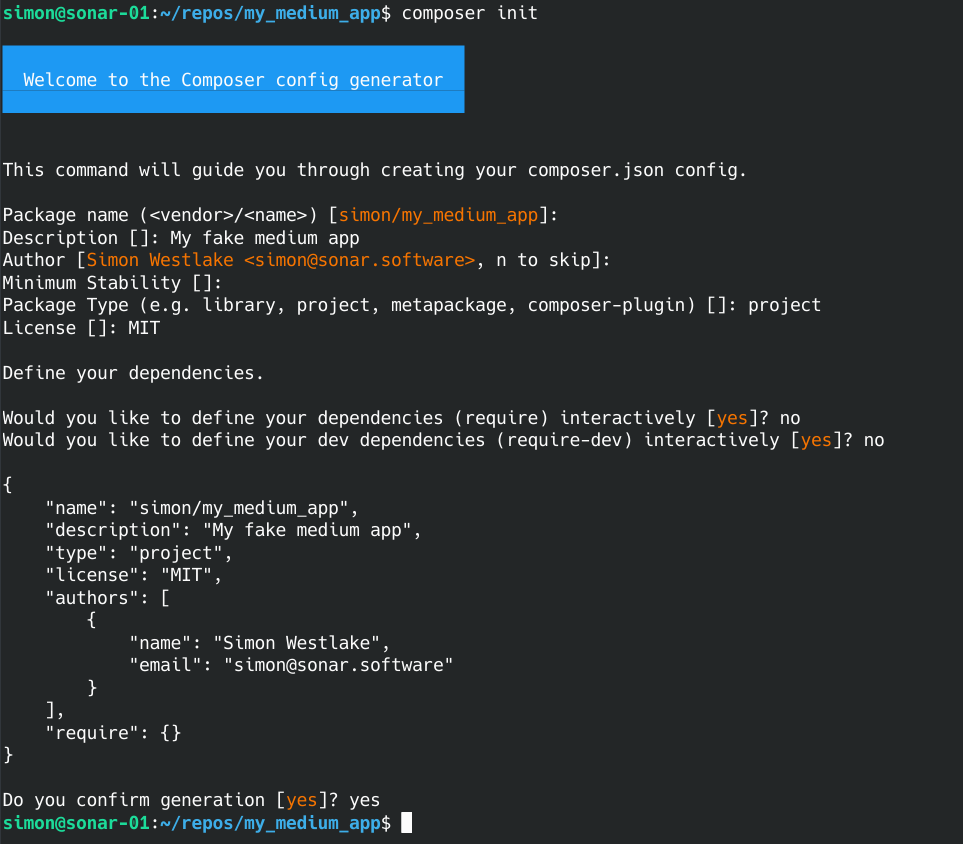
Now I can add Guzzle as a dependency by typing composer require guzzlehttp/guzzle.
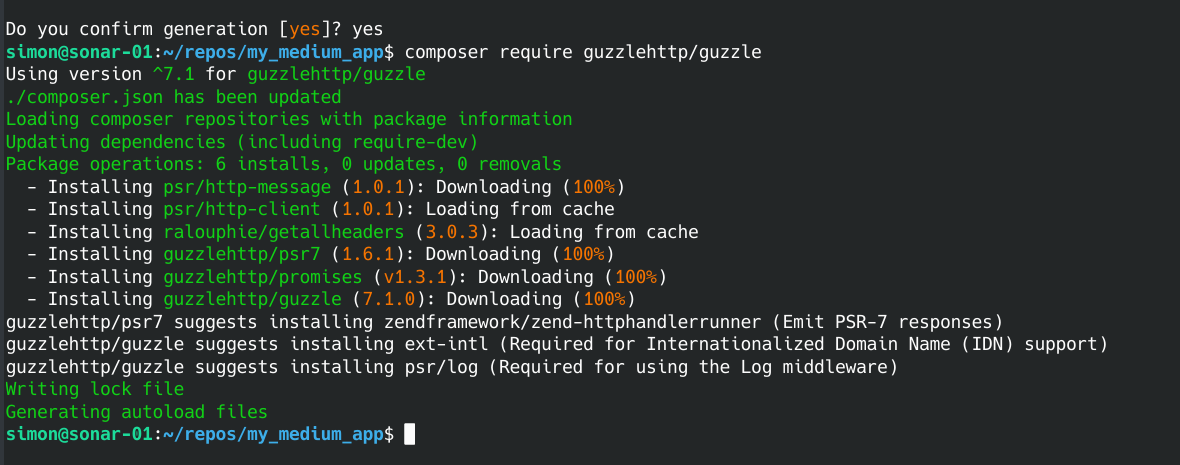
Now I’m going to create a single PHP file called medium.php to act as my app. In this file, I’m going to include the Composer autoloader to automatically load any packages I install. I’ll also add a temporary echo statement so I can make sure it works.
Now let’s test it out in my shell by typing php medium.php.

Alright, great — my file executes at least. Let’s move onto actually making an API request.
Calling the Sonar API
In order to access the API, you need an access token. The access token must be generated inside Sonar, so log in to your instance and navigate to your profile page. Up at the top right, click the arrow next to Update Info and select Create Personal Access Token.
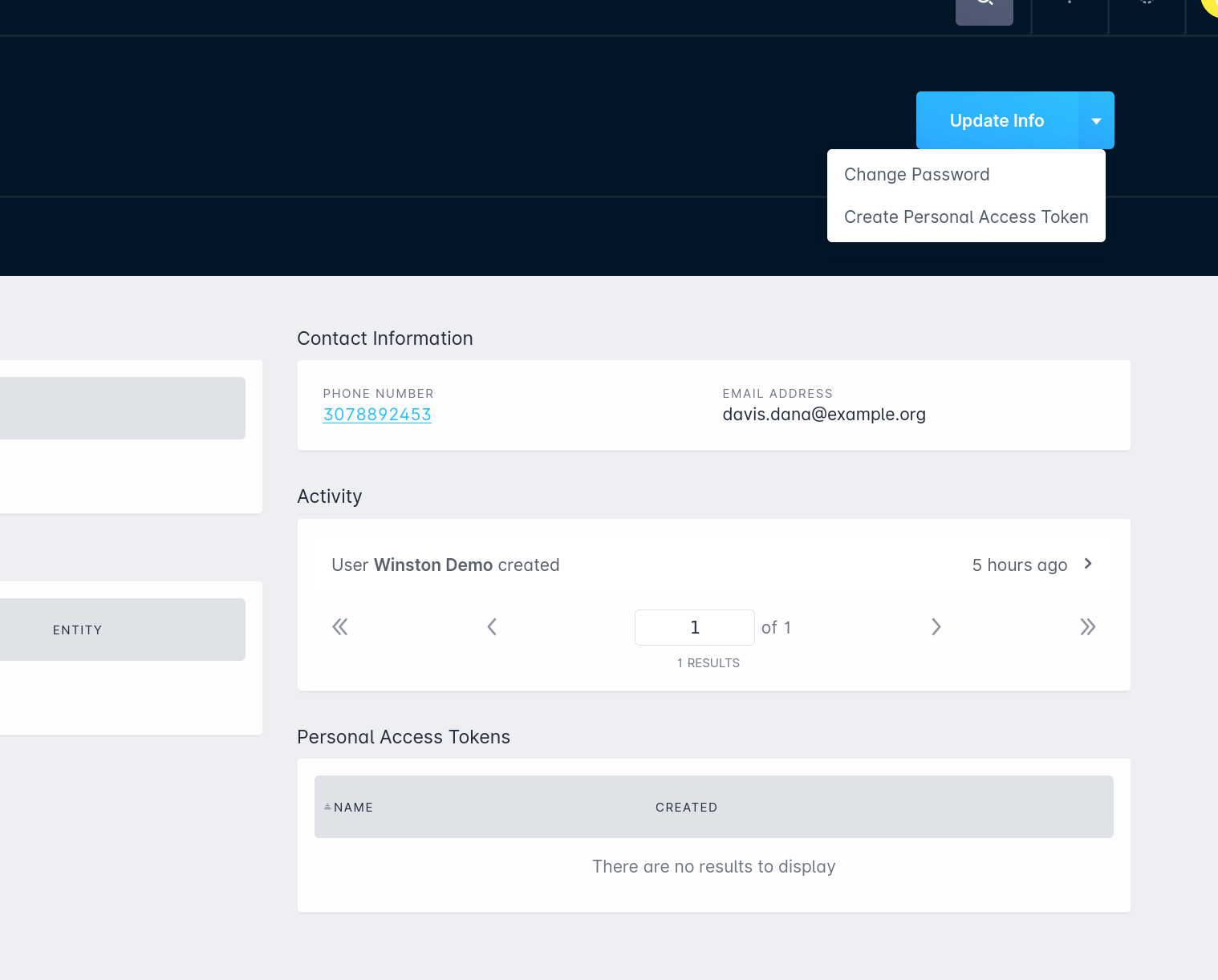
This will generate a very long unique token for you that you’ll only be able to see once, so make sure you copy it down!
Next, we need to start building up our request. Let’s start by making a simple query. I personally like to use heredoc syntax to write out my query.
Here, I’ve wrapped my simple query inside heredoc syntax using <<Next, let’s setup the Guzzle request to submit this to the Sonar API. I’m going to embed my token right into the code as the variable $token, build up my headers, and submit the query. Even though the query is not valid JSON, we want to submit this as JSON and just treat it as a string. See below.
We’re submitting an HTTP POST to /api/graphql at your Sonar URL. The two headers to include are an Authorization header where we send the token we created earlier with the prefix Bearer, and we tell the server we want to accept JSON as a response. We then submit JSON to the server as a simple object, where the property is query and the value is our query. Let’s see what we get back by decoding the response and just printing it out to the screen.
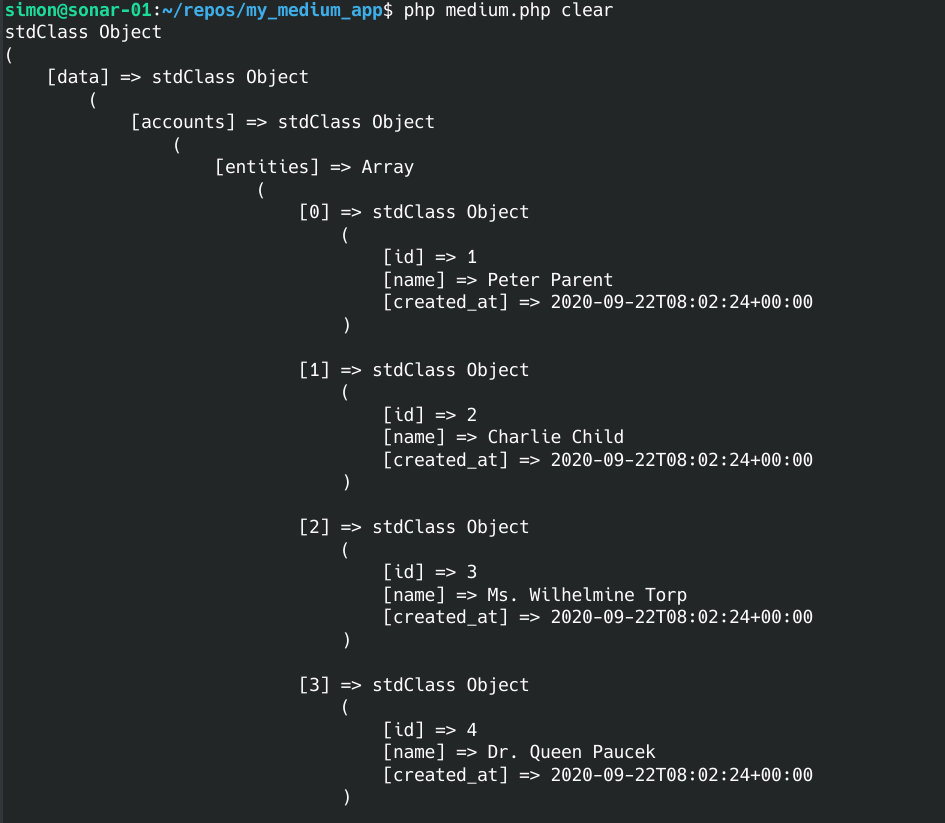
As you can see, we get this back in the same format I showed previously using GraphiQL. The top level property is data, followed by the query name of accounts, and then the fields we requested.
Next, let’s submit some inputs here — rather than just getting all accounts, I’d like to submit a search object to get back accounts named Peter, like I did in an earlier article with Raphael.
First, let’s build up the search object in the same manner as we did previously. This time, we’re just going to build it as an array in PHP. Here’s the example from the last article:
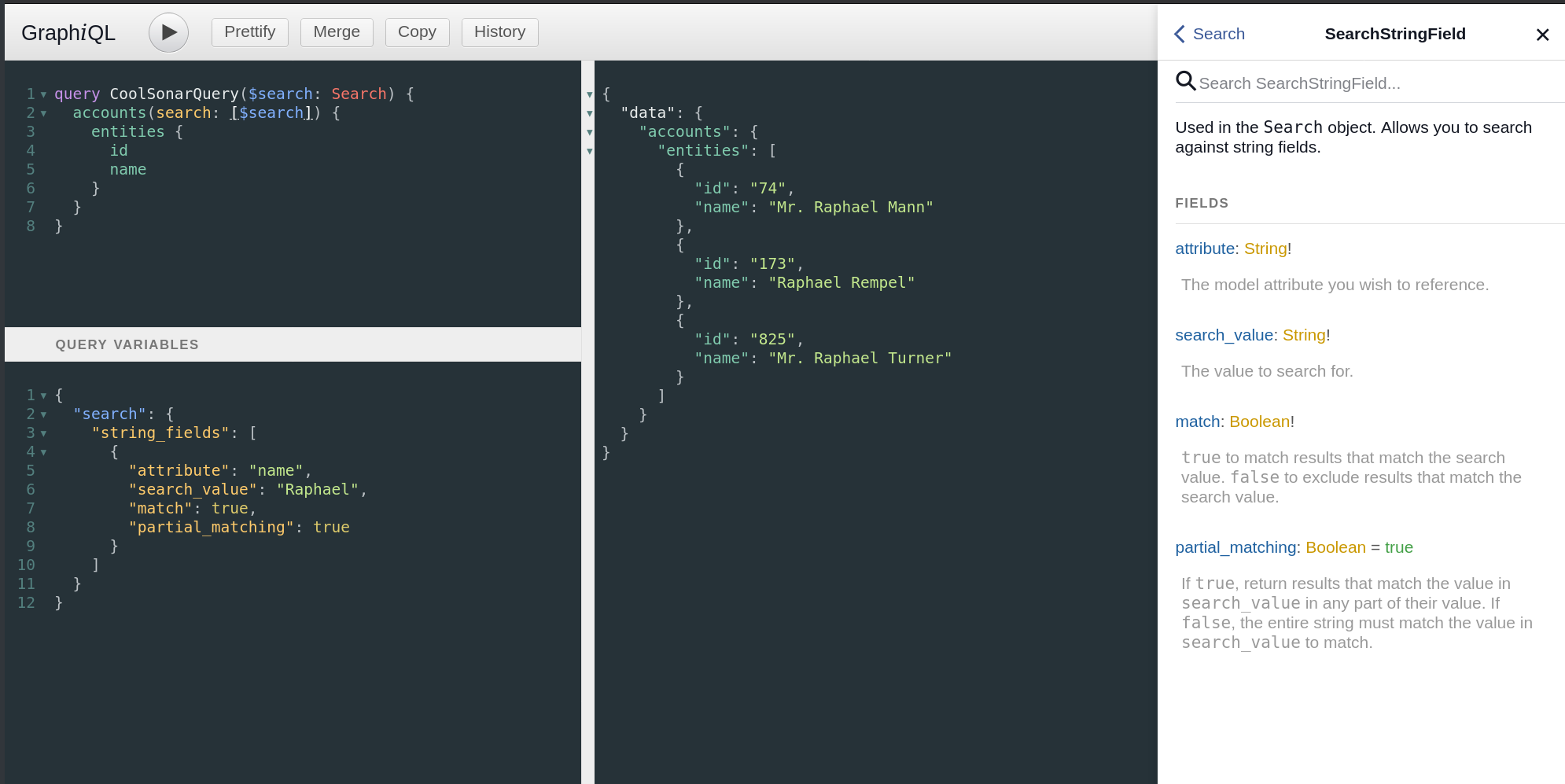
To build this up in PHP, we’ll do the following.
Next, we need to add this to our Guzzle request. To submit variables, we just add another property into the body named variables.
Lastly, we need to update the query to make use of the variables. Note that I’m escaping the $ character here, as if we don’t, PHP will interpret it as a variable reference. We could also convert to using nowdoc syntax instead.
Finally, let’s run our script again by executing php medium.php.
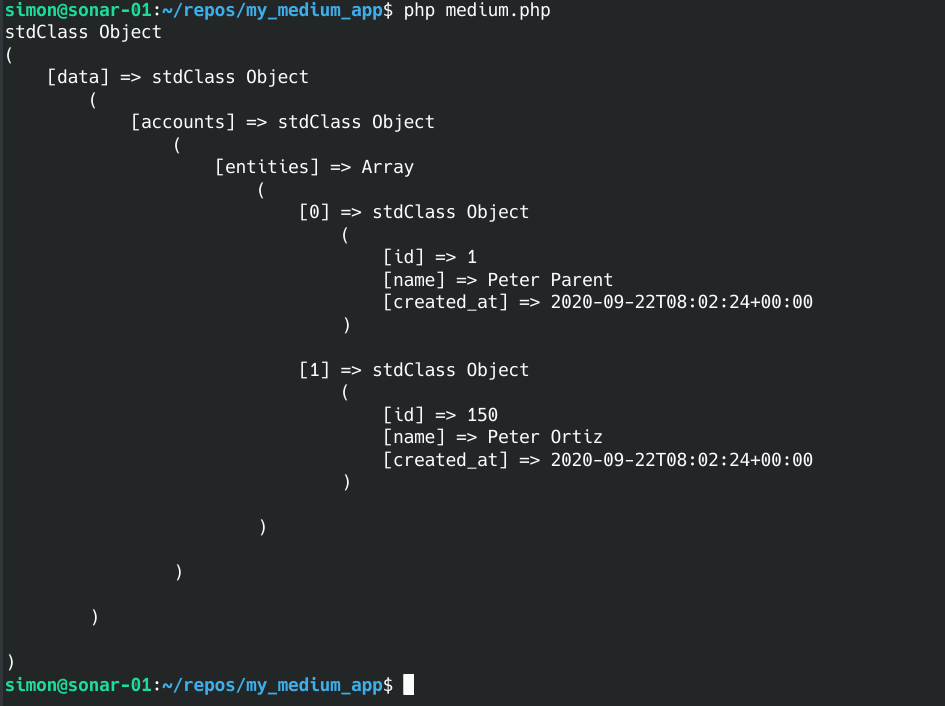
As you can see, our search object was applied, and we only got back accounts that have Peter in the name property.
Hopefully this is enough to get you started! Share what you build — I’d love to hear about it.




